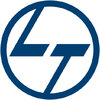


Tejas Networks



10+ Tejas Networks Engineer Interview Questions and Answers
Q1. What are the requirements for the implementation of stm-1 link and what is the capacity of stm-1 link
Requirements and capacity of stm-1 link implementation
Requirements include fiber optic cables, SDH equipment, and proper configuration
Capacity of stm-1 link is 155.52 Mbps
STM-1 link is commonly used in telecommunications for high-speed data transmission

Q2. What is subnet mask and how to calculate the no. Of usable ip's. What is network host ip and broadcast ip
Subnet mask is used to divide an IP network into subnetworks, determining the network and host portions of an IP address.
Subnet mask is a 32-bit number that separates the network and host portions of an IP address.
To calculate the number of usable IPs in a subnet, subtract 2 from the total number of IPs in the subnet.
Network host IP is the first IP address in a subnet, while broadcast IP is the last IP address in a subnet.
For example, in a subnet with a subnet mask of 255.255...read more

Q3. How to upgrade software in olt, ont and tejas 1400 locally and from nms?
To upgrade software in OLT, ONT, and Tejas 1400 locally and from NMS, follow these steps.
Locally: Use a USB drive to transfer the software update file to the device. Access the device's management interface and initiate the upgrade process.
From NMS: Use the Network Management System (NMS) to remotely push the software update to the devices. Schedule the upgrade during off-peak hours to minimize disruption.
Ensure compatibility: Check the release notes of the software update to...read more

Q4. What is ipmpls? What are the advantages of MPLS? Which one is better mpls or traditional routing.
MPLS stands for Multiprotocol Label Switching. It is a protocol used in high-performance telecommunications networks.
Advantages of MPLS include improved performance, scalability, quality of service, and traffic engineering capabilities
MPLS allows for efficient packet forwarding based on labels instead of IP addresses
MPLS can support different types of traffic, such as voice, video, and data, with different service levels
MPLS is often preferred for large networks with high tra...read more

Q5. What are different kinds of cards used in tejas 1400 and 1600 mux.
Different kinds of cards used in Tejas 1400 and 1600 mux include line cards, switch cards, and power cards.
Line cards: used for connecting the mux to external devices
Switch cards: used for routing data within the mux
Power cards: used for providing power to the mux
Examples: STM-1 line card, STM-4 switch card, power supply card

Q6. What is layer-2 and layer-3 services. Also what is the difference between them.
Layer-2 and layer-3 services refer to different levels of network services in the OSI model.
Layer-2 services operate at the data link layer and include functions like MAC address assignment and Ethernet switching.
Layer-3 services operate at the network layer and include functions like IP address assignment and routing.
The main difference between layer-2 and layer-3 services is the level at which they operate in the OSI model.
Layer-2 services are more focused on local network ...read more

Q7. What is ip address and difference between ipv4 and ipv6?
An IP address is a unique numerical label assigned to each device connected to a computer network. IPv4 uses 32-bit addresses, while IPv6 uses 128-bit addresses.
IP address is a unique identifier for devices on a network.
IPv4 uses 32-bit addresses, represented in decimal format (e.g. 192.168.1.1).
IPv6 uses 128-bit addresses, represented in hexadecimal format (e.g. 2001:0db8:85a3:0000:0000:8a2e:0370:7334).

Q8. What is gpon technology? Also explain briefly gpon architecture?
GPON technology is a type of passive optical network that uses fiber-optic cables to deliver high-speed internet, TV, and phone services.
GPON stands for Gigabit Passive Optical Network
It uses a point-to-multipoint architecture, where a single optical fiber serves multiple users
GPON architecture includes an Optical Line Terminal (OLT) at the service provider's central office and Optical Network Terminals (ONTs) at the customer premises
Data is transmitted using time-division mu...read more


Q9. What are different types of alarms occuring in tejas equipments
Different types of alarms in Tejas equipments include power alarms, temperature alarms, and communication alarms.
Power alarms: indicate issues with power supply or voltage levels
Temperature alarms: alert when equipment temperature exceeds safe limits
Communication alarms: signal problems with data transmission or network connectivity

Q10. what is ipv4 and ipv6 address of google dns server
IPv4 address of Google DNS server is 8.8.8.8 and IPv6 address is 2001:4860:4860::8888.
IPv4 address: 8.8.8.8
IPv6 address: 2001:4860:4860::8888

Q11. What is difference between xa60g and xa20g card.
The main difference between xa60g and xa20g cards is the processing power and memory capacity.
xa60g card has higher processing power and memory capacity compared to xa20g card
xa60g card is more suitable for high-performance computing tasks
xa20g card may be more cost-effective for less demanding applications

Q12. How to add and delete nodes in NMS?
Nodes can be added and deleted in NMS by using the management interface or command line interface.
Nodes can be added through the management interface by selecting the 'Add Node' option and providing the necessary information such as IP address, hostname, and SNMP credentials.
Nodes can also be added through the command line interface by using specific commands to add a new node to the network management system.
To delete a node, navigate to the 'Delete Node' option in the manag...read more

Q13. What is Ip address and subnet mask
An IP address is a unique numerical label assigned to each device connected to a computer network, while a subnet mask is used to divide an IP network into subnetworks.
IP address identifies a device on a network, like 192.168.1.1
Subnet mask determines the network portion of an IP address, like 255.255.255.0
Subnet mask is used to separate the network and host portions of an IP address

Q14. What is OSI and TCP/IP Model
OSI and TCP/IP models are networking models that define how data is transmitted over a network.
OSI model has 7 layers: Physical, Data Link, Network, Transport, Session, Presentation, Application.
TCP/IP model has 4 layers: Network Interface, Internet, Transport, Application.
OSI model is theoretical while TCP/IP model is practical and widely used.
OSI model is a reference model while TCP/IP model is a protocol stack.
Example: OSI model helps in understanding how data flows in a n...read more

Q15. What is DCCR and DCCM?
DCCR stands for Data Center Control Room and DCCM stands for Data Center Construction Manager.
DCCR is a centralized location within a data center where operators monitor the performance of servers, networks, and other equipment.
DCCM is responsible for overseeing the construction and maintenance of data center facilities.
Examples: DCCR helps in ensuring smooth operations of data centers by monitoring and managing resources efficiently. DCCM ensures that data center constructio...read more

Q16. Explain sdh structure and sdh frame
SDH structure refers to the hierarchy of synchronous digital signals, while SDH frame is the basic unit of data transmission in SDH networks.
SDH structure includes various levels such as STM-1, STM-4, STM-16, etc.
SDH frame consists of a fixed number of bytes, with overhead for management and error correction.
SDH frame structure includes sections, lines, and paths for data transmission.
Example: STM-1 is a common level in SDH structure, with a data rate of 155.52 Mbps.

Q17. What is vlan and vlan-id
VLAN stands for Virtual Local Area Network. VLAN ID is a unique identifier assigned to a VLAN.
VLAN is a logical grouping of devices on the same network segment.
VLANs help in segmenting network traffic for security and performance reasons.
VLAN ID is a number assigned to each VLAN to differentiate it from others.
For example, VLAN 10 might be used for finance department while VLAN 20 for marketing.

Q18. What is stm-1 link
STM-1 link refers to a Synchronous Transport Module level 1 link used in telecommunications for transmitting data.
STM-1 link operates at a data rate of 155.52 Mbps.
It is commonly used in SDH (Synchronous Digital Hierarchy) networks.
STM-1 link can carry multiple DS3 or E3 circuits.
It is equivalent to 63 E1 channels or 28 DS1 channels.

Q19. Explain VCG, VCAT
VCG stands for Voltage Controlled Gain and VCAT stands for Voltage Controlled Attenuator.
VCG is a circuit that adjusts the gain of an amplifier based on a control voltage.
VCAT is a circuit that adjusts the attenuation of a signal based on a control voltage.
Both VCG and VCAT are commonly used in electronic devices to control signal levels.
Example: VCG can be used in audio amplifiers to adjust the volume based on user input.
Example: VCAT can be used in RF communication systems ...read more





Interview Process at Tejas Networks Engineer

Top Engineer Interview Questions from Similar Companies









Reviews
Interviews
Salaries
Users/Month












